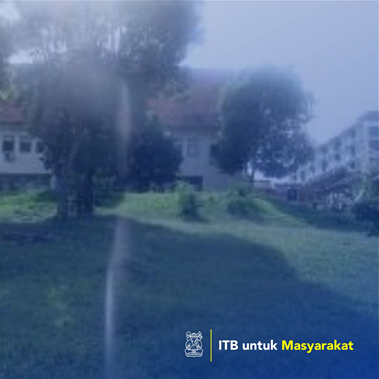

Sony Heru Sumarsono
The development of Campus ITB Jatinangor has been done for five years and some buildings to support academic activities have been build. The development of those buildings may affect the ecosystem in both inside and outside area of the campus. The quality and quantity of biotic terestrial ecosystem consists of both flora and fauna may also change. Therefore, the effect of the development of the campus to those plants and animals must be monitored. Based on the “Surat Keputusan Bupati Sumedang” throuh “Environmental Office” No 660.1/325/BLH/2013, monitoring should be carried out in every six months. The aims of this activity are to monitor and evaluate the plant and animal species diversity in the area of the Campus of ITB Jatinangor. For the long period of time, this activity will be worth to prepare the baseline data of plant and animal diversity in the campus area. The monitoring activities has been carried out to identify the vegetation, animals, and the land types of the campus. Some prameter for the condition of vegetation such as: the total number of species and family of the plants, their density, INP (indeks nilai penting = important value index), as well as Shannon-Wiener index. The bird diversity including total number of species, family and total number of indiviuals of each species. Furthermore the land types including land profile and the analysis of land fertility. All the data was analised as base conditon of flora and founa after 5 years of the development of the campus of ITB Jatinangor. The results of the monitoring activity are as follows: 1. The diversity of plant/vegetation in the campus area categorised as moderate, with Shannon-Wiener Index = 3.23 2. Total species of plant/vegetation are 147 species, consist of 47 family and 5,547 individual plants. The Gmelina (Gmelina arborea) is the most dominant tree followed by mahoni (Swietenia macrophylla) and sengon (Falcataria molucana). 3. The highest relative density is Gmelina (0.30%), followed by Mahoni (0.25%) and Sengon (0.16%) 4. The highest INP found are Mahoni (0.73), followed by Gmelina (0.55) and Sengon(0.42) 5. The total number of herb species found in the area are 52 species including into 23 family 6. Total number of perdu (small tree trunk) in the area are 24 species including into 12 family 7. The bird diversity found in the area are 35 species including into 25 family 8. The bird population that have categorised as “rare” are 11 species, categorised as “often” are 18 species, and categorised as “common” are 8 species. 9. We found that the land of the campus of ITB Jatinangor has 2 different types ie: “inceptisol” and “ultisol”. Both types of land are acid or mildly acid with a low KTK (Kapasitas Tukar Kation = kation change capasity) value, and mildly infertil with low humus content.
Penerapa Karya Seni/Desain/Arsitektur/Perencanaan Wilayah
The development of Campus ITB Jatinangor has been done for five years and some buildings to support academic activities have been build. The development of those buildings may affect the ecosystem in both inside and outside area of the campus. The quality and quantity of biotic terestrial ecosystem consists of both flora and fauna may also change.